When discussing inequality in the classroom, it’s tempting to focus on external factors like socioeconomic status or educational tools like rubrics; it’s more uncomfortable to tackle a topic like teacher bias. After all, no one wants to think they are biased, particularly not people who devote their time, money, and energy to teaching the next generation.
However, even the most dedicated and well-meaning teacher holds stereotypes and beliefs that affect their students. Unfortunately, these beliefs can be as harmful as they are inevitable—at least when unexamined.
The Stakes
Unconscious bias is particularly relevant to America today because of our education achievement gap.
As of 2008, 82.7% of Asian students and 78.4% of white students graduated high school on time, whereas the same was true for only 57.6% of Hispanic students, 57% of black students, and 53.9% of American Indian students. Similar disparities exist for essentially every other measure of educational achievement including standardized test scores, GPA, and suspension rates.
While some of the achievement gap is due to long-standing societal factors that go back to our country’s inception, many studies show that another portion of this inequality is perpetuated in American classrooms today.
The Evidence for Teacher Bias
In the 1960s, Harvard professor Robert Rosenthal performed an experiment to gauge how teachers’ expectations affect student performance.
He told elementary school teachers that a test could determine which students’ IQs were about to increase rapidly, randomly selected students to label with this potential growth, and tested the students’ real IQs at the beginning of the year as well as at the end. The results? “If teachers had been led to expect greater gains in IQ, then increasingly, those kids gained more IQ,” said Rosenthal.
This study is the basis for most of the following research on stereotypes in the classroom. The principle is the same—whether it’s gender or race, student preference or handwriting, any factor that causes a teacher to have higher expectations for some of their students and lower expectations for others is bound to create results to match.
Teacher Bias and Student Achievement
This might be surprising news—until you think about how much teachers affect their students. After all, if an educational authority with 20 years of experience acts as if a specific third grader doesn’t show much promise, who are they to know differently?
Put more generally, teachers’ belief in their students’ academic skills and potential is “a vital ingredient for student success” because it is linked to students’ beliefs about “how far they will progress in school, their attitudes toward school, and their academic achievement.”
When teachers underestimate their students, it affects not just that one student-teacher relationship but the student’s entire self-concept as well as more tangible measures like their GPA. Examining unconscious bias is imperative to improving educational outcomes, particularly for low-income students, minorities, and women in STEM, but the only way to do that is to first understand what biases exist for most teachers.
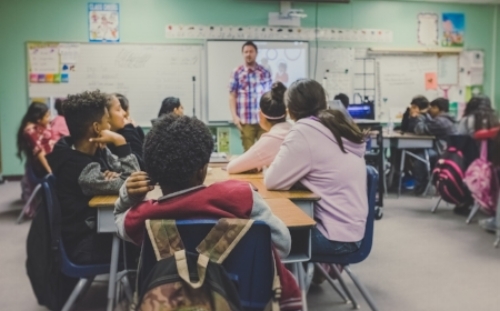
Gender Bias in the Classroom
The effects of gender bias in the classroom are complicated, and research suggests that these biases have disadvantages for both boys and girls in different ways.
DISCRIMINATION AGAINST BOYS IN SCHOOL
For boys, many of the challenges have to do with behavior and self-regulation. For example, according to the authors of Reaching Boys, Teaching Boys, boys are expelled from preschool almost five times more than girls, boys are more likely to drop out of school and less likely to do homework, and boys make up an increasingly low number of college graduates. The authors conclude that, since boys often receive lower grades than their test scores would predict, behavior-heavy grading practices penalize boys, particularly in the younger grades.
According to a survey of 2,500 teachers, lessons that require motor activity or competition can encourage boys to succeed in the classroom and help teachers stop discriminating against boys in school.
DISCRIMINATION AGAINST GIRLS IN SCHOOL
That being said, some of that same attention to boys’ behavior can harm girls as well; studies have shown that teachers often reward girls for being quiet rather than prompting them to seek deeper answers.
Educational research also reveals that teachers are more likely to interrupt girls, less likely to call girls to the front of the class to demonstrate, and less likely to direct their gaze toward girls while answering open-ended questions.
As is true with most kinds of biases, teachers are often completely unaware that they are treating their male and female students differently; these actions only become clear when teachers view videotapes of their classroom interactions.
Unfortunately, the inequality doesn’t stop once the students leave the classroom at the end of the day.
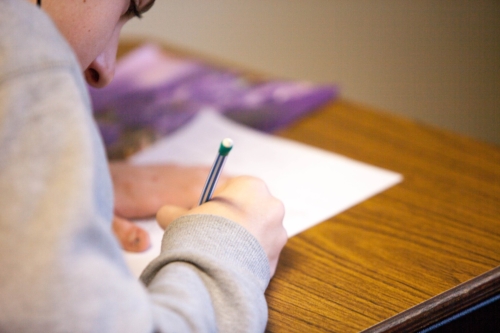
GRADING WITH TEACHER BIAS
An education study done in Israel showed that gender bias also affects how teachers grade their students.
In the experiment, the researchers had classroom teachers, as well as external teachers, grade the same set of math tests completed by both girls and boys; they found that classroom teachers systematically gave their female students lower grades than the external teachers did. The only difference between the classroom teachers and the external teachers was that the external teachers graded blindly with respect to gender.
What’s even more striking is that the same girls who were scored unfairly in sixth grade ended up pursuing fewer high-level STEM courses in high school.
As one commentator on the study pointed out, most of the teachers involved in the study were female, so “it’s hard to imagine that these teachers actually have conscious animosity toward the girls in their classroom.” It’s an unconscious bias that caused them to treat their female students unfairly when it came to math and science—perhaps the same way their own teachers treated them.
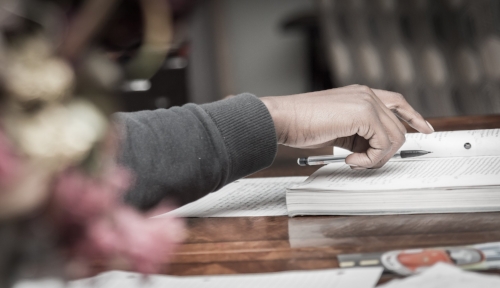
Racial Bias in the Classroom
As much as teachers are influenced by societal beliefs about gender, racial bias in education is arguably an even greater problem in the average American classroom.
A 2014 report showed that black children make up only 18% of preschoolers but make up 48% of children suspended more than once. The reasons for this disturbing disparity were explored by a recent study in which researchers read teachers vignettes about students of different genders and races with behavioral problems.
They discovered that teachers “increased the severity of suggested disciplinary actions when the race of the teachers didn’t match that of the child.” This insight is particularly important given that the National Center for Education Statistics found in 2010 that students of color make up over 45% of public school students whereas 83% of their teachers are white, and this gap is only projected to grow in coming years.
Unfortunately, this racial bias in education doesn’t stop at discipline. Students of color are significantly more likely to be concentrated in low-income schools with less qualified teachers, fewer material resources, larger classes sizes, and lower long-term expectations for their students. If a student of color does end up in a high-achieving school, they will be less likely to be placed in classes that will prepare them for college; “even when grades and test scores are comparable, black students are more likely to be assigned to lower-track, nonacademic classes.”
In addition, no matter what kind of class these students end up taking, teachers still tend to grade students different than them more harshly. This effect is not limited to students of color born in the United States.
For example, a 2018 study found that pre-service teachers “graded the performance of a student who appeared to have a migrant background statistically significantly worse than that of a student without a migrant background.”
Although issues of inequality in the classroom are complicated, unconscious bias is particularly important to study; without evidence that teachers are grading some students more harshly than others, it is easy to pin achievement differences on the students or on purely external factors that seem too difficult to solve.

Implicit Bias in the Classroom
In addition to more systemic biases regarding gender and race, many teachers also hold implicit biases about individual students that should not—but do—affect grading. For example, a 2013 study done by the Department of Education tried to determine whether a teacher’s general feelings about a student affected their essay score.
After externally trained moderators looked at thousands of student essays and the scores they received from their teachers, almost two-thirds of the moderators believed that “teachers’ personal feelings about particular pupils influenced their assessments… on a regular basis.” Aside from affinity, factors such as neat handwriting and lengthy essays also artificially inflated the students’ scores.
The so-called “teacher’s pet effect” can also overlap with the psychological phenomenon called the halo effect. Researchers have found that prior experiences with a student can bias teachers about current assignments.
When graders were exposed to a student’s oral presentation before receiving their written essay, “the graders assigned significantly higher scores to written work following the better oral presentation than following the poor oral presentation.”
This finding is important because it goes against the entire aim of education—to grow intellectually across the days and years. If teachers have an implicit bias to give lower grades to those students who previously got lower grades, the students might indeed be improving without the feedback to show it.
Eliminating Teacher Bias
To address the various kinds of biases that exist in the classroom, many researchers have called for more anonymity in the grading process. In some ways, this is easier said than done.
Teachers could ask their students to write their names on the back of their papers rather than at the top or have students turn their papers in electronically with student ID numbers rather than names. However, these methods involve complete student compliance, which is difficult to achieve and may add time to the grading process, which already overburdens most teachers.
There are many other ways to decrease teacher bias in the classroom—from the hiring process all the way to lesson plans.
STAFF DIVERSITY
One way to decrease bias, particularly racial bias, is to prioritize diversity in the hiring process. Many of the aforementioned studies on race showed that white teachers were more likely to discipline non-white students; hiring teachers that better reflect the diversity of the student body can begin to mitigate that problem.
BIAS IDENTIFICATION
After hiring diverse teachers, it’s important not to ask them to suppress biases or pretend to be color-blind; as Stanford’s Center for Education Policy Analysis explains, this is likely to be counterproductive and might even exacerbate existing biases.
It is, however, important to have teachers identify specific biases, perhaps through taking an Implicit Association Test (IAT), and then reduce shame levels by acknowledging that we all have biases.
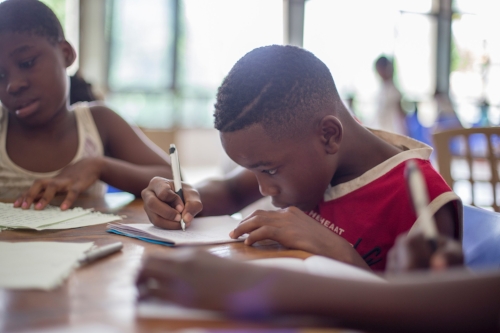
DEVELOPMENT PROGRAMS
Specific professional development programs have also been shown to decrease prejudice. One online intervention encouraging empathy-centered discipline ended up cutting suspension rates in half, an important success given the disproportionate rates of suspension for black students.
In other studies, short mindfulness and loving-kindness meditations reduced implicit biases toward people of color among white participants.
TEACHER REFLECTION
On a more individual level, teachers can also reflect on and change their practices to reduce their own biases in the classroom.
For example, after a few months of school, the Educational Development team at Plymouth University suggests that teachers take a few minutes to “reflect on the distribution of students who are selected to be representatives or who participate most in the class.” Asking yourself whether the distributions are equal (and if not, why not) can be a starting place for more equality in the classroom.
ASSESSMENT PROCESSES
Teachers should also reflect on how they approach the assessment process. Jensen Learning advises asking yourself, “Do you begin with strengths and interests, then use those as starting points? Or, do you focus first on the deficits?” Deficit-focused teachers who have low expectations for certain students (or all their students) are more likely to have students with low expectations for themselves.

STUDENT CULTURE & BACKGROUND
It may also be helpful to reflect on certain societal and cultural assumptions. For example, wholeheartedly believing in a meritocracy can “make teachers treat students who don’t succeed as if their failures are purely the result of lack of hard work and ability” rather than a complicated combination of internal and external factors.
In addition, being mindful of students’ different backgrounds can help you avoid unnecessary conflict. For instance, a student may resist looking a teacher in the eye while speaking because some cultures interpret direct eye contact as a lack of respect; on the other hand, some Eurocentric teachers might think that same lack of eye contact indicates disrespect or shyness. Not all students will have the same cultural assumptions as their teachers, and it is our responsibility, not theirs, to bridge the gap.
STUDENT INVOLVEMENT
After reflecting, teachers can consider sharing some of this information with their students. After all, it is not only teachers who struggle with biases but everyone; encouraging students to examine themselves and the world around them can prepare them for being self-aware and fair citizens.
Some possibilities for lessons include integrating TED talks on unconscious bias, assigning projects on gendered marketing, and reading books that explicitly tackle issues of race, gender, and class. Although unconscious bias may be inevitable, negatively impacting your students is not.
Being aware of the major types of bias that exist, participating in professional development programs that emphasize diversity, and reflecting on the fairness of your own teaching practices are simple but important ways to help close the achievement gap. Let’s make sure that our students are being taught equally and assessed fairly on the assignments that they can control, rather than the things about them that they can’t.
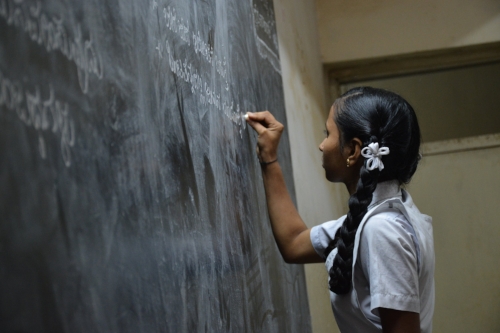
How We Can Help
Partnering with Marco Learning can solve many of these problems at the same time. Our trained future educators do not have any information about the gender, race, or socioeconomic class of your students, and they won’t know about how well you get along with them, how neat their handwriting is, or how well they did on previous assignments.
As Teacher Magazine points out, when it comes to preventing bias, “the less you know about the individual the better,” and there is nothing influencing our Graders besides the quality of the assignment in front of them.
In addition, decision fatigue can increase unconscious bias in teachers since biases ultimately exist to help us make quicker decisions based on surface level factors. By giving teachers more time to grade, Marco Learning helps teachers make better decisions when they do so.
 Help
Help